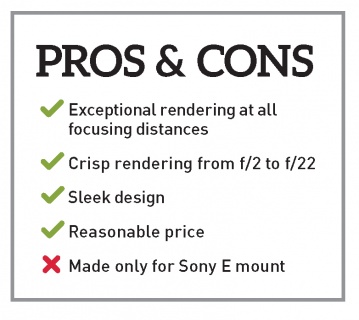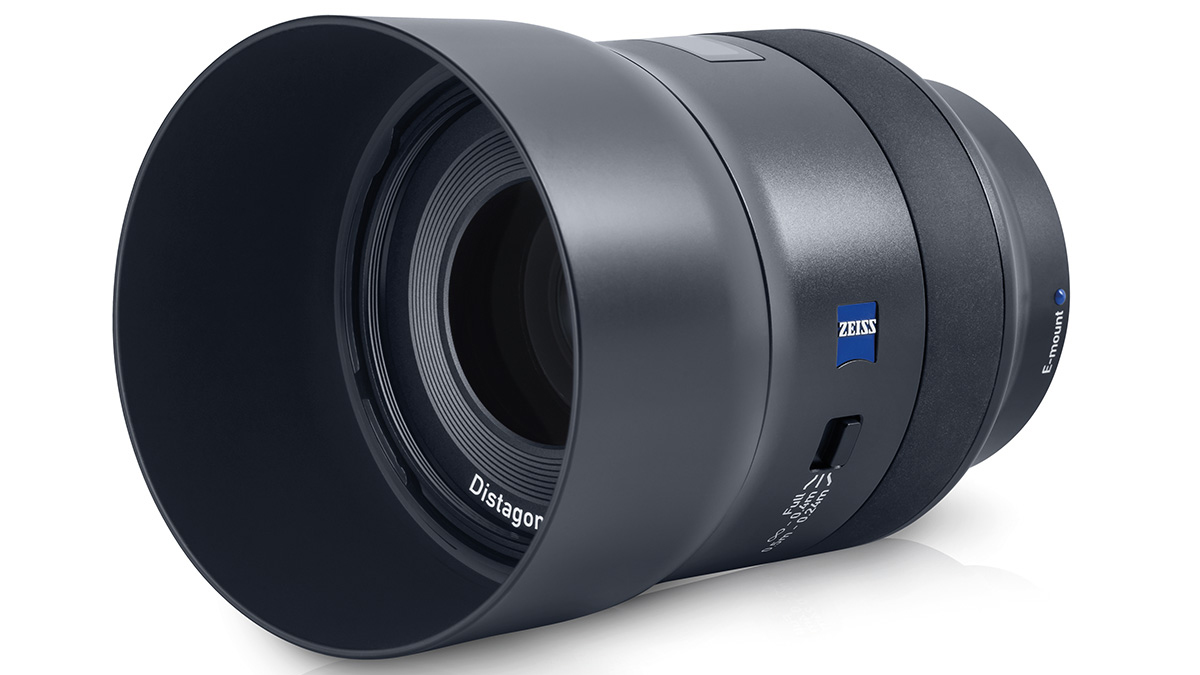Product review: Zeiss Batis 2/40 CF lens
A lens review of the Zeiss Batis 2/40 CF lens
• November 2019 issue
The name Zeiss has been synonymous with high quality optics for more than a century, so it’s not image quality that makes Zeiss Batis lenses remarkable. What makes these full-frame camera lenses notable is that they’re autofocus.
I took a close look at the Batis 2/40 CF, a 40mm f/2 lens built for full-frame Sony E-mount cameras. While you’ll get the most value out of it on a camera with tight pixel pitch (like the 60-megapixel Sony a7R IV or the APS-C format a6400), it can make the most of any body you put it on. The 40mm focal length places it in the middle of the current Batis lineup of ultra-wide to short telephoto lenses.

While most lenses do their best at greater distances, the Zeiss Batis 2/40 accurately renders subjects at all focusing distances.
CF demarks its close focusing capabilities, though at its minimum focusing distance of 9.4 inches the reproduction ratio is 1:3.3, so it’s not even close to being classified as a macro. The lens acutely renders subjects at all focusing distances. That is no mean feat as most lenses are at their best when used at greater distances.
The Batis 2/40 is a modern variation on Zeiss’ Distagon retro-telephoto formula for wide-angle lenses. Optically the lens consists of nine elements in eight groups with independent movement of some groups relative to others to optimize performance at different focus distances. What Zeiss calls “anomalous partial dispersion” glass makes up five elements, and four of them, including one made from that special glass, have complexly curved surfaces. Nine curving blades form the aperture. The combination of optics and aperture produce the “Zeiss Look,” which the company characterizes as “sharpness, 3D pop, and true color rendering.”

Zeiss
The lens lives up to Zeiss’ MTF (Modular Transfer Function) charts. MTF charts are objective measurements of a lens’ ability to resolve the differences between increasingly small fine lines at both the center of the frame (where lenses are at their best) and out into the corners. It’s the nature of optics that lenses have a sweet spot roughly 1 to 3 stops down from wide open. The Batis 2/40 is extraordinary in that performance remains high from f/2 down to f/22 with extremely crisp rendering. The only other lenses I’ve seen match this performance at all apertures are the significantly more expensive, large, heavy, manual-focus Zeiss Otus lenses. Some of the primes in Sigma’s Art series have performance that is within a hair’s breadth of the Otus lenses, but they’re large and heavy as well.

High refractive index glass and Zeiss T anti-reflective coating aid in rendering color neutrality without contamination.
It would be easy to dismiss Zeiss’ “true colors” claim as marketing hype, but the combination of high refractive index glass and Zeiss T anti-reflective coating does a credible job of rendering color neutrally with minimal contamination. The “3D pop” look is a combination of sharpness against pleasing out-of-focus areas. Others call this the bokeh effect. Whatever Zeiss calls it, the look is truly beautiful.
The lens is 3.7 inches long with a maximum diameter of 3.6 inches and a weight of 12.8 ounces. It’s an excellent physical match for any Sony a7 or a9 camera body and feels a bit large on the smaller APS-C format a6000 series. It’s not a small lens, but the optical construction and autofocus mechanism justify its weight and size.
The look and feel of the lens make it a beautiful modernistic object, maybe the most beautiful I’ve ever used. And it’s a pleasure to use. The smooth-textured yet grippy focus ring for manual focus shooting is about 3/4 inches wide. Rotate the ring clockwise for focusing toward infinity. For manual focusing, the electronic focus by wire system is responsive and finely grained. On the left side of the body is a switch for limiting the autofocus range.
The lens comes with a deep, efficient lens shade and uses 67mm diameter filters. There is no traditional depth-of-field scale. In its place is a small but easy-to-read white-on-black LCD panel displaying focusing distance and the calculated hyper-focus depth range for the chosen f-stop.

However, if you are a Sony-invested photographer, this lens is as close to being perfect as can be found in its focal length. It’s sharp, fast, stylish, a pleasure to use, and considering the performance, reasonably priced at $1,169. Nothing is perfect, and the Batis 2/40 has just one deficit that keeps me from recommending it to every photographer: It’s available only in a Sony E mount. I have nothing against Sony. The a7RIII and a9 are terrific, and the APS-C format a6500 and a6400 lead their class, but I wish it were available for Nikon Z, Canon EOS R, and the new Panasonic S1R cameras as well.
Ellis Vener is contributing editor for Professional Photographer.
Tags: lenses


